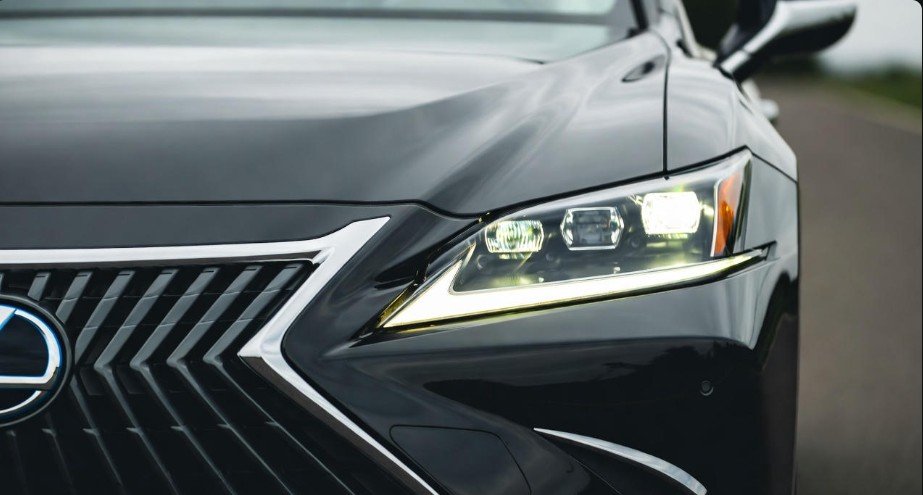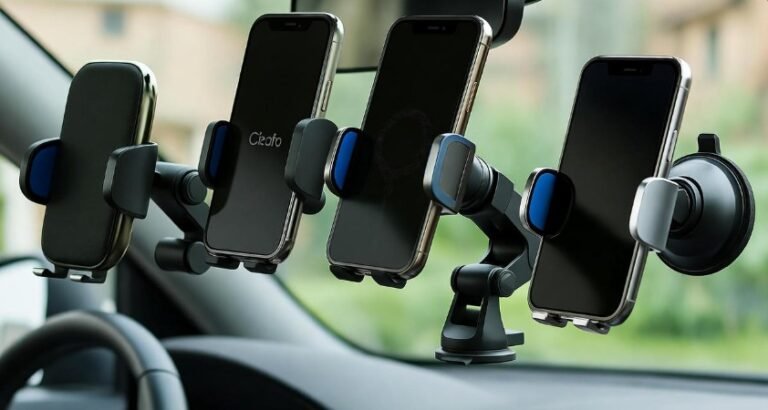How Do I Reset My Lexus After Replacing the Battery: Simple Steps for a Smooth Restart

Replacing the battery in your Lexus might feel like a quick fix — just swap out the old one, tighten the cables, and you’re done, right? Not exactly. Modern Lexus vehicles are packed with advanced electronics that depend on a constant power supply to retain system memory. When that battery is replaced or disconnected, your car can “forget” important settings, from engine calibration to window positions. That’s why knowing how to reset your Lexus after replacing the battery is crucial.
Imagine your Lexus as a smart assistant that suddenly loses Wi-Fi connection. It still works, but certain functions—like the key fob, ECU, or power windows—might act up until you reconnect everything properly. This guide walks you through each reset step in simple terms so you can restore your Lexus’s smooth performance and prevent those annoying post-battery hiccups.
Let’s go step-by-step through this reset process to make sure your Lexus is back to its premium, silky-smooth self.
Why You Need to Reset Your Lexus After a Battery Replacement

When you replace your car battery, it’s not just the engine that loses power—your Lexus’s computer systems, sensors, and memory modules also shut down. These systems rely on stored data to operate efficiently. Without that memory, the vehicle might run rough, display incorrect readings, or even lock certain features.
Resetting restores harmony between all these components. It tells your car’s brain—the ECU (Engine Control Unit)—to re-learn how to idle, shift gears, and regulate fuel.
Here’s what can go wrong if you skip the reset:
-
Rough idling or unstable RPM levels
-
Transmission hesitation or jerky shifting
-
Unresponsive power windows or sunroof
-
Key fob not working
-
Check engine light turning on unnecessarily
So, resetting your Lexus isn’t just a suggestion—it’s a small yet powerful step that keeps your luxury ride performing like new.
Step 1: Turn Off the Ignition Before Anything Else
Before touching the battery or any electrical part, make sure your Lexus ignition is completely off. Remove the key or key fob from the car and ensure that no lights or systems are active.
This step might sound obvious, but many people overlook it and accidentally trigger system alerts or drain the new battery during installation. Turning off the ignition ensures your car’s electrical systems are in a “safe mode,” ready to accept the new power source.
You can think of it like turning off a computer before changing its hardware. If you unplug and reconnect things while it’s still running, it could cause a short circuit or system error.
Once everything is off and quiet, pop open the hood and prepare for the battery replacement.
Step 2: Replace the Battery Properly and Safely
The actual replacement is straightforward, but accuracy is key here. Lexus vehicles have specific battery setups, so always check your owner’s manual to confirm the battery type and size.
Here’s a safe and simple process:
-
Open the hood and locate the battery.
-
Use a wrench to disconnect the negative terminal (-) first, followed by the positive terminal (+).
-
Remove the old battery carefully—avoid tipping it or spilling any acid.
-
Place the new battery in the same orientation.
-
Connect the positive terminal (+) first this time, then the negative terminal (-).
-
Tighten the connections securely but don’t overtighten.
✅ Pro tip: Apply a thin layer of petroleum jelly to the terminals before reconnecting to prevent corrosion.
This careful replacement ensures steady voltage and helps avoid error codes or short circuits once you start the reset process.
Step 3: Resetting Power Windows and Sunroof
After replacing the battery, many Lexus owners notice that their power windows or sunroof stop working automatically. Don’t panic—this is perfectly normal. When the battery is disconnected, your car forgets the position of these features. A quick recalibration fixes it.
Here’s what you need to do:
-
For Power Windows:
-
Turn the ignition to “ON.”
-
Lower each window completely.
-
Raise it all the way back up and hold the switch for 2–3 seconds once fully closed.
-
-
For the Sunroof:
-
Make sure it’s fully closed.
-
Press and hold the close button for about 10 seconds.
-
Once done, your Lexus should “remember” the window and sunroof positions again.
This step may seem small, but it’s essential. Think of it as teaching your car’s systems how to move properly again—like resetting muscle memory after a break.
Step 4: Reset the Remote Key Fob
If your remote key fob stops responding after the battery change, don’t assume it’s broken—it just needs a re-sync. The Lexus security system sometimes disconnects from the key during power loss for safety reasons.
Here’s an easy method to reprogram it:
-
Close all doors and windows.
-
Insert your key into the ignition and remove it twice within 5 seconds.
-
Open and close the driver’s door twice within 40 seconds.
-
Insert the key into the ignition again, then close the driver’s door.
-
Turn the ignition from “LOCK” to “ON” five times, ending in “LOCK.”
-
Remove the key—you’ll hear a beep confirming entry into remote programming mode.
-
Press any button on the remote to pair it.
You’ll hear another beep when the connection is successful. This method reestablishes the link between your Lexus and your key fob, ensuring keyless entry and ignition work perfectly again.
If the steps don’t work on the first try, repeat carefully. Timing is crucial, and different Lexus models might have slightly varied sequences.
Step 5: Resetting the ECU (Engine Control Unit)
One of the most critical parts of resetting your Lexus after replacing the battery is resetting the ECU. This unit controls how your car’s engine behaves—everything from fuel injection to idle speed depends on it.
When the battery is disconnected, the ECU loses its learned parameters. As a result, you might notice rough idling or sluggish acceleration until it relearns your driving patterns.
Here’s a simple reset method:
-
Open the hood and find the fuse box.
-
Locate the EFI (Electronic Fuel Injection) fuse.
-
Pull it out and leave it disconnected for about 10 seconds.
-
Reinsert it securely.
Then, start your car and let it idle for about 10 minutes without touching the gas pedal. This allows the ECU to recalibrate air-fuel mixture, idle speed, and throttle response.
During this time, avoid turning on the AC or radio. The goal is to let your Lexus find its balance again—like giving it a few quiet moments to gather its thoughts after a power nap.
Step 6: Test Everything Before Driving
Now that you’ve performed all the resets, it’s time to verify that every system is running smoothly. Start your Lexus and check the dashboard for any warning lights. Listen to the idle speed and feel how the car responds.
Here’s a quick checklist:
-
Engine runs smoothly without fluctuating RPM
-
Transmission shifts cleanly
-
Power windows and sunroof respond correctly
-
Key fob locks/unlocks doors
-
Radio, clock, and climate control settings restored
If everything checks out, take a short drive to ensure your Lexus adapts to the new power source and recalibrates fully.
Sometimes, a few minor glitches might appear within the first few miles—don’t worry. The car’s systems often fine-tune themselves as you drive.
Why Resetting Matters More Than You Think
Many car owners skip the reset thinking it’s optional. But with a Lexus—where engineering precision meets digital intelligence—every system communicates with another. A simple battery swap can disrupt this communication temporarily.
Resetting ensures that every part—from the ECU to the window sensors—knows how to talk to each other again. It’s the automotive version of pressing the “refresh” button on your computer.
Here’s why it matters:
| System Affected | Possible Issue | Solution |
|---|---|---|
| ECU | Rough idle or poor fuel economy | Remove EFI fuse and reset ECU |
| Windows/Sunroof | Unresponsive auto function | Recalibrate by holding switches |
| Key Fob | Doesn’t unlock or start | Re-sync remote manually |
| Clock/Radio | Loses settings | Manually reset preferences |
Performing a complete reset saves you from unnecessary trips to the dealership and keeps your car performing as intended.
Common Mistakes to Avoid When Resetting Your Lexus
When it comes to learning how to reset your Lexus after replacing the battery, the process seems easy on paper—but many owners fall into small traps that can cause bigger headaches later. It’s important to understand what not to do to ensure a smooth and successful reset.
One common mistake is disconnecting or reconnecting the terminals in the wrong order. Always disconnect the negative (-) terminal first and reconnect it last. This prevents short circuits that can damage sensitive electrical components. Another issue arises when people rush through the reset process. Skipping steps—like failing to recalibrate the power windows or sunroof—can leave you wondering why automatic functions no longer respond.
Additionally, some drivers turn on multiple accessories (like air conditioning, headlights, and the infotainment system) right after installing the new battery. This sudden power surge can strain your vehicle’s ECU before it has time to stabilize.
To sum up:
-
Follow the order of connections carefully.
-
Take your time with each step.
-
Avoid using accessories until the reset is complete.
-
Allow your Lexus to idle and recalibrate naturally.
These precautions might seem small, but they protect the delicate electronics that make your Lexus a masterpiece of precision engineering.
Understanding the Science Behind Lexus Battery Resets
Think of your Lexus as a human body, with the battery acting as its heart. When you replace the heart, the brain (your ECU and computer modules) temporarily loses memory of how everything works together. This is why your vehicle may behave differently for a short time after a battery change.
The Lexus ECU doesn’t just control fuel and air—it learns from your driving habits. It adjusts throttle response, gear shifting, and idle speed based on your patterns. A battery disconnection wipes this learned data, forcing the system to relearn from scratch. That’s why after installing a new battery, your car might feel slightly “off” for the first few drives—it’s simply recalibrating.
This adaptive design helps your Lexus maintain efficiency and smoothness over time, but it depends on proper reset procedures. By following the steps correctly, you help your car quickly “remember” its optimal settings.
In short, resetting isn’t just about restarting electronics—it’s about restoring harmony between the vehicle’s intelligence and power supply.
Advanced Tips for a Perfect Lexus Reset
If you want to take your reset process a step further, here are some advanced tips that can make a real difference in how your Lexus performs after a battery replacement:
-
Use a Memory Saver Device
Before replacing your battery, connect a small OBD-II memory saver tool to maintain the car’s computer memory. This prevents the ECU and entertainment systems from losing their settings altogether. -
Clean Battery Terminals
Even a brand-new battery can underperform if the terminals are corroded. Use a wire brush and baking soda-water mixture to clean the connectors before reinstallation. -
Check the Alternator
If your Lexus battery dies frequently, it’s not always the battery’s fault. The alternator might not be charging it properly. Test the voltage—it should read between 13.5V and 14.5V when the engine is running. -
Drive Gently for the First 50 Miles
After resetting the ECU, avoid aggressive acceleration or heavy braking for the first few drives. This helps the ECU relearn fuel and air patterns smoothly. -
Update Software if Needed
Some Lexus models allow software updates through dealerships or authorized services. If your car behaves oddly after the reset, an ECU update might restore full efficiency.
Following these pro tips helps ensure your Lexus not only restarts correctly but also performs at its peak for the long run.
How Long Does It Take to Fully Reset a Lexus?
The entire reset process, including all steps—battery installation, recalibration, and ECU learning—typically takes about 20 to 30 minutes. However, the ECU’s adaptive learning process can take a bit longer.
In most cases, it can take a few driving cycles (about 50–100 miles) for your Lexus to relearn optimal idle speed, fuel mapping, and transmission shift points. During this period, you may notice:
-
Slight fluctuations in RPM while idling
-
Delayed acceleration response
-
Temporary drop in fuel economy
Don’t be alarmed—this is normal. The ECU continuously adjusts itself based on your driving style. Once it settles, your Lexus should feel as refined and responsive as before, if not smoother.
Patience here truly pays off. Think of it like breaking in a new pair of shoes—the more you drive, the better it fits your driving personality again.
When Should You Seek Professional Help?
Even though resetting your Lexus after a battery change can be done at home, there are times when it’s wise to get help from a professional mechanic or your local Lexus dealership.
Seek expert assistance if:
-
Warning lights remain on after a full reset
-
The car won’t start or idles erratically
-
The key fob still doesn’t respond after multiple reset attempts
-
Electrical components (radio, navigation, etc.) fail to power up
Modern Lexus vehicles use intricate computer networks that may require diagnostic tools to reset fully. A technician can use specialized equipment to scan for hidden error codes and clear them safely.
In most cases, though, if you follow the step-by-step reset correctly, you’ll have no trouble. But it’s comforting to know that professional help is available if anything unusual happens.
How Do I Know If My Lexus Battery Needs Replacement Again?
After successfully resetting your Lexus, it’s worth learning how to identify when the battery might need another replacement in the future. Batteries typically last 3–5 years, but several signs indicate it’s nearing the end of its life:
-
Slow engine crank or delayed start
-
Dimming headlights or interior lights
-
Electrical accessories losing power
-
A warning message on your dashboard
-
Visible corrosion or swelling on the battery
If you notice these signs, have your battery tested before it leaves you stranded. Lexus vehicles rely heavily on electrical stability, so proactive maintenance is the best approach.
Remember: a healthy battery means fewer resets, fewer headaches, and more enjoyable drives.
Frequently Asked Questions (FAQs)
1. Why does my Lexus need to be reset after replacing the battery?
When you replace the battery, your Lexus loses stored data that controls essential systems like the ECU, power windows, and key fob. Resetting helps restore communication between these systems for smooth operation.
2. Can I drive my Lexus immediately after replacing the battery?
Yes, but you should first perform all reset steps. Once done, drive gently for the first few miles so the ECU can relearn your driving patterns.
3. What if my check engine light stays on after a reset?
Sometimes, residual error codes remain in the system. Drive for a few cycles—if the light persists, disconnect the battery for another 10 minutes or visit a mechanic for a diagnostic scan.
4. Do all Lexus models have the same reset procedure?
Not exactly. The general process is similar, but certain models—like the RX, ES, or NX—might have small variations. Always refer to your owner’s manual for model-specific instructions.
5. Can I reset my Lexus battery without visiting a dealership?
Absolutely. Most battery resets can be done at home with basic tools and patience. Dealership visits are only needed for complex electronic issues or persistent warning lights.
6. Why are my radio presets and clock settings gone?
When the battery disconnects, your infotainment system resets too. You’ll need to re-enter radio stations, Bluetooth connections, and clock settings manually.
7. Is it bad to keep replacing my Lexus battery frequently?
If you’re changing batteries more than once every two to three years, something might be draining it—like a faulty alternator or parasitic draw. Have a technician inspect the system to prevent future issues.
8. How do I ensure my next Lexus battery lasts longer?
Keep the terminals clean, drive regularly, and avoid leaving lights or electronics on when the engine is off. Regular maintenance ensures longer battery life and fewer resets.
Conclusion: Resetting Your Lexus—Simple Steps for Long-Term Peace of Mind
Resetting your Lexus after replacing the battery isn’t just about pushing buttons—it’s about restoring your car’s rhythm and balance. These steps ensure your ECU, windows, key fob, and electronic systems communicate properly, maintaining the comfort, performance, and reliability Lexus is known for.
By taking a few minutes to perform this reset carefully, you avoid potential electrical glitches, keep your vehicle running efficiently, and save yourself unnecessary trips to the service center.
Remember:
-
Always replace and reconnect the battery safely.
-
Follow each reset step patiently.
-
Let the car idle and recalibrate naturally.
Treat your Lexus like a finely tuned instrument—it performs best when everything is perfectly in sync. Once you complete the reset, you’ll feel the difference immediately: smoother idling, responsive electronics, and that signature Lexus calmness on the road.
So, the next time someone asks, “How do I reset my Lexus after replacing the battery?”, you’ll not only know the answer—you’ll have mastered the process with confidence.






